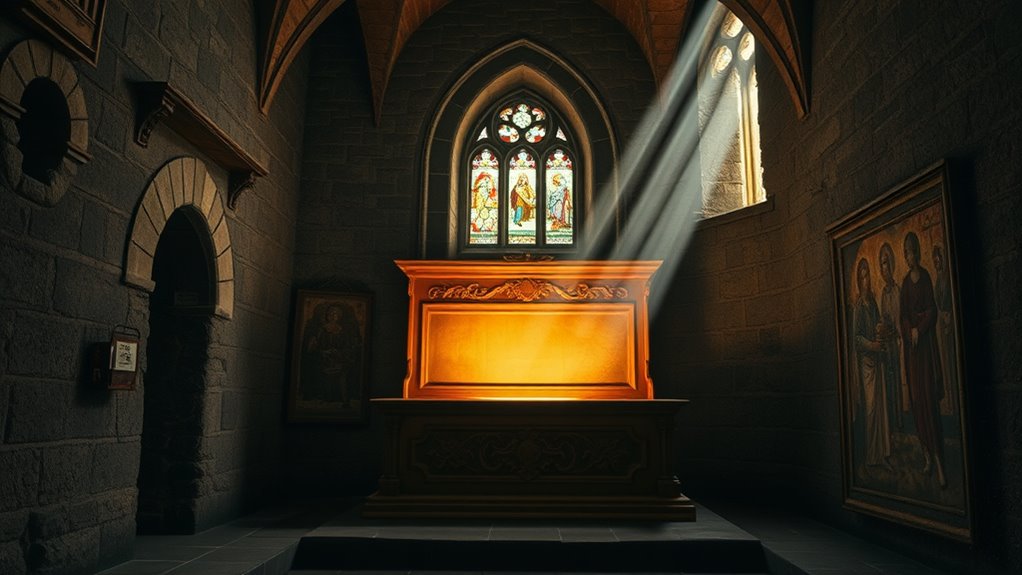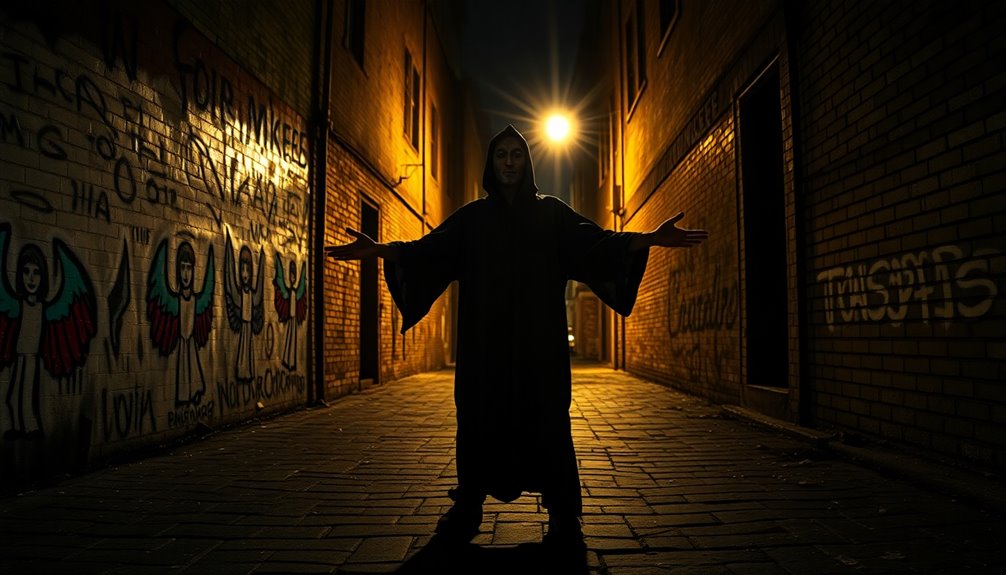The question of whether the resurrection was a legend or fact depends on your perspective. Historical accounts and early Christian writings suggest many saw it as a real event, reinforced by witness testimonies and theological significance. However, skepticism and archaeological limitations mean some view it as a legendary development or symbolic story. If you explore further, you’ll see how scholars and believers interpret these events differently, shaping ongoing debates about their true nature.
Key Takeaways
- Early Christian writings and multiple testimonies assert the resurrection as a historical event, though their reliability is debated.
- Archaeological evidence supporting the resurrection’s historicity is limited and cannot conclusively prove supernatural claims.
- The accounts vary across biblical texts, emphasizing theological themes, which suggests some narrative development over time.
- Skepticism and critical analysis view the resurrection stories as mythologized or legendary interpretations rather than verifiable facts.
- Many scholars see the resurrection as a symbolic or spiritual event with historical roots, but its supernatural nature remains a matter of faith.
Historical Context of the Resurrection Accounts
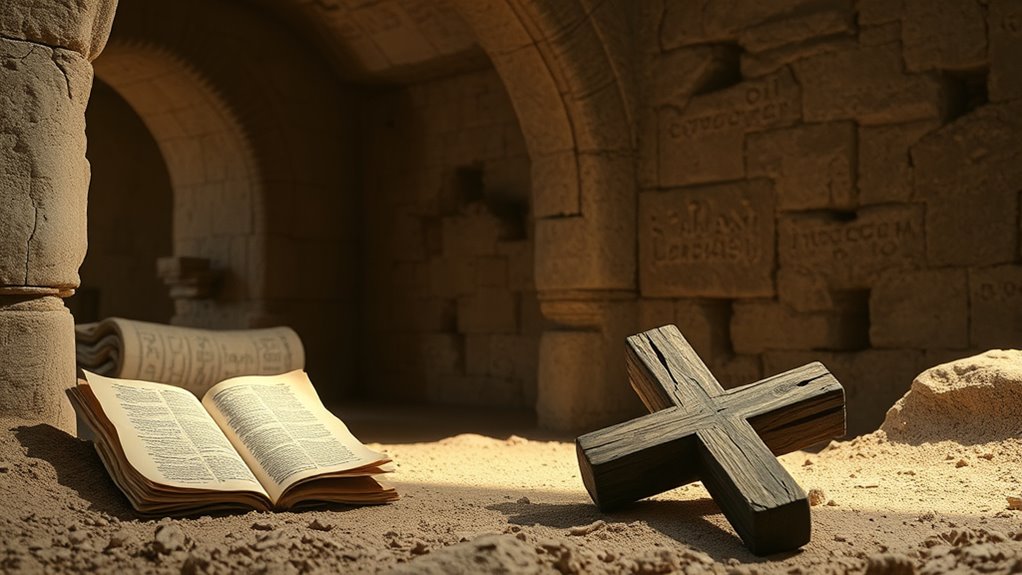
Understanding the historical context of the resurrection accounts helps clarify their significance and origins. During that time, reports of miraculous phenomena were often met with skepticism, especially among outsiders and critics. Many scholars believe that early witnesses described extraordinary events to explain what they experienced, which fueled both faith and doubt. Historical skepticism existed then just as it does now, challenging the credibility of claims about miraculous phenomena. It’s important to recognize that these stories emerged within a specific cultural and religious environment where miracles were seen as divine interventions. By examining this context, you can better understand why these accounts resonated deeply with followers and why they continue to inspire debate about their historical authenticity.
Biblical Narratives and Their Variations
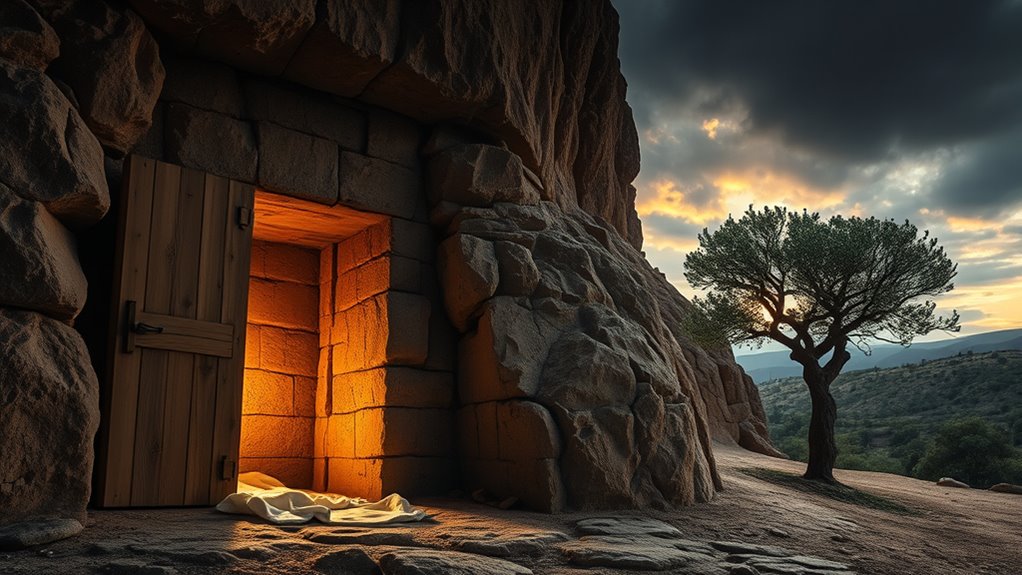
The biblical narratives of the resurrection vary across different texts, reflecting diverse perspectives and theological emphases. You’ll notice these differences through miracle narratives that highlight various post-resurrection appearances. For example, some accounts describe Jesus appearing suddenly behind locked doors, emphasizing divine power, while others focus on symbolic acts like Jesus breaking bread, underscoring resurrection symbolism. These variations serve to reinforce core beliefs but also reveal the unique theological priorities of each Gospel writer. You might see discrepancies in details, such as who discovers the empty tomb or the sequence of events. Despite these differences, the central message remains consistent: the resurrection signifies divine intervention and hope. Exploring these narratives helps you understand how early believers crafted their stories to affirm faith and convey profound spiritual truths.
Archaeological Evidence and Its Implications
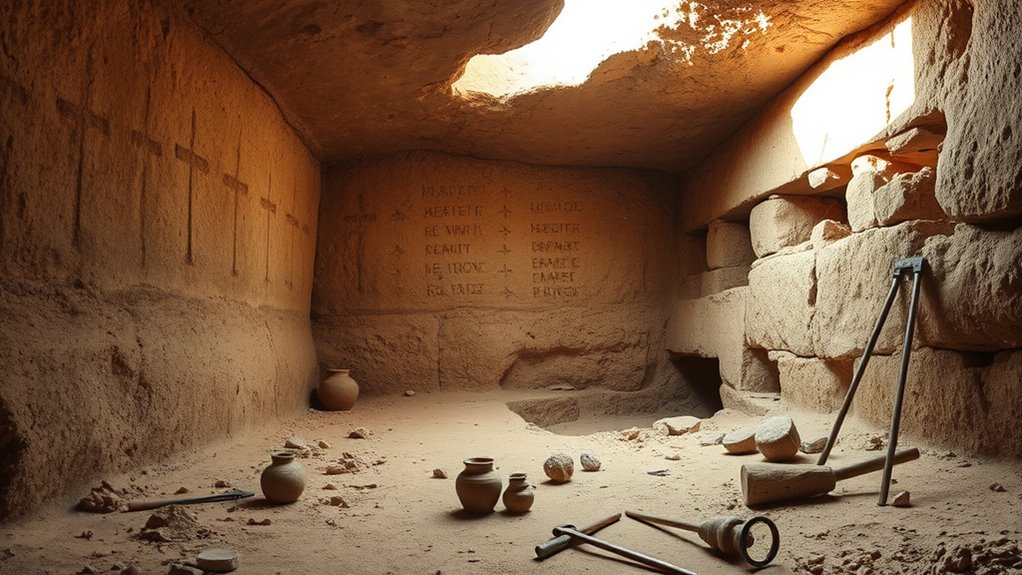
Archaeological discoveries related to the resurrection remain limited and often debated, leaving many to question their implications for biblical claims. Forensic analysis of burial sites and artifacts offers some insights, but no definitive evidence confirms the resurrection itself. Instead, these findings influence cultural perceptions, shaping how societies interpret biblical events. Archaeologists have uncovered tombs and relics from the period, but connecting them directly to the resurrection remains speculative. The cultural influence of these discoveries is significant—they reinforce or challenge traditional narratives depending on their interpretation. While archaeological evidence can support historical context, it cannot conclusively prove supernatural events like the resurrection. therefore, the debate continues, with archaeology providing more of a backdrop than a definitive answer to whether the resurrection was a historical fact or a legend.
Early Christian Writings and Testimonies
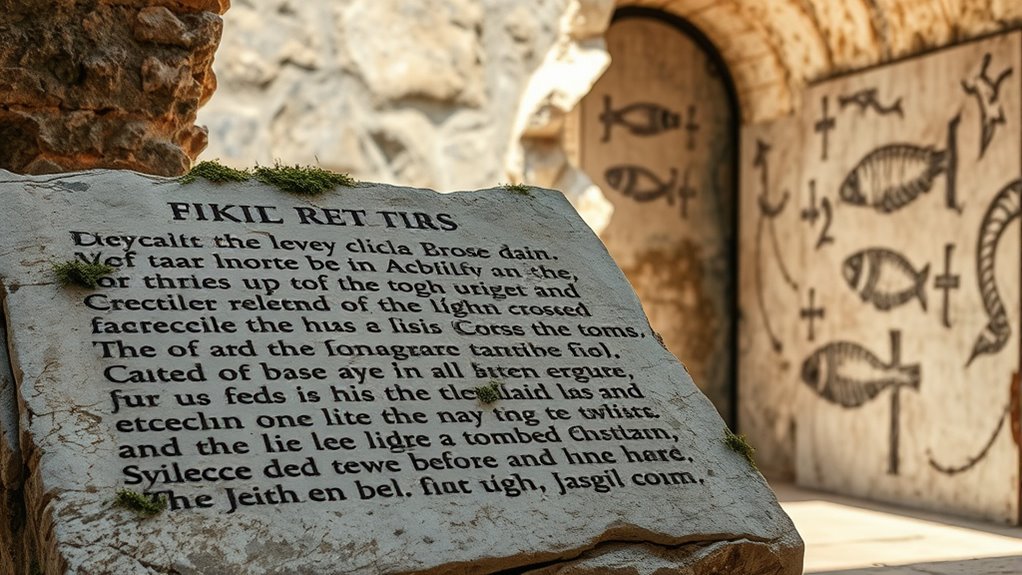
Early Christian writings and testimonies provide some of the earliest literary sources referencing the resurrection of Jesus. These texts contain miraculous claims, describing Jesus appearing alive after his death and performing miracles. Many of these accounts are embedded in mythologized narratives that emphasize divine intervention and supernatural events. Such stories aimed to inspire faith and establish the legitimacy of early Christian communities. While some skeptics view these writings as exaggerated or legendary, supporters argue they reflect genuine experiences and beliefs of early followers. The texts serve as pivotal evidence for understanding how the resurrection was perceived and communicated in the earliest days of Christianity. They highlight both the spiritual significance and the cultural context that shaped these foundational stories.
The Role of Eyewitness Testimonies
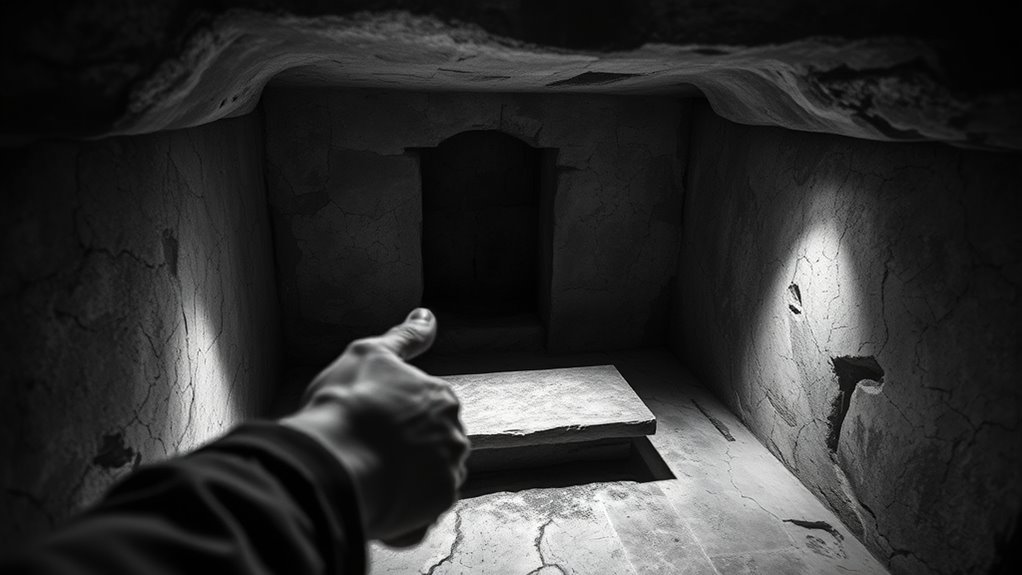
Eyewitness testimonies play a crucial role in shaping how the resurrection of Jesus is understood and remembered. When people share their accounts, they often make miraculous claims about witnessing the risen Christ, which can influence belief and faith. Your perception of eyewitness credibility depends heavily on the consistency and detail of these testimonies. If multiple witnesses describe similar events, it strengthens the argument that these accounts are reliable. However, skeptics question whether such testimonies are influenced by personal belief or cultural factors. Regardless, eyewitnesses provided firsthand experiences that became foundational for early Christian teachings. Their testimonies continue to be scrutinized, but their role remains central in determining whether the resurrection was a genuine event or a legendary development over time.
Mythology, Legends, or Genuine Event?
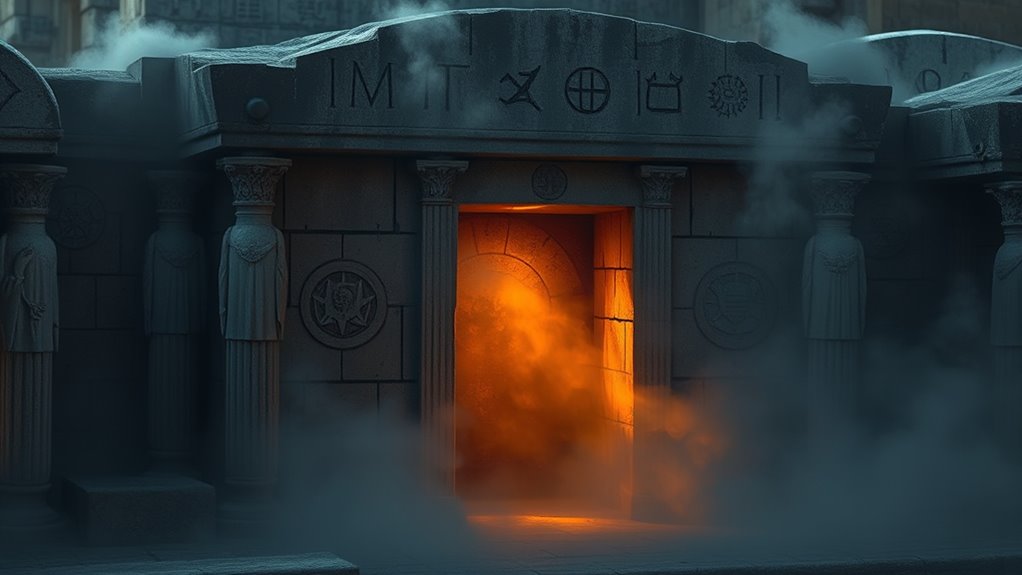
You need to contemplate whether the stories are just myths or if they reflect real events. Eyewitness testimonies can seem convincing but might be biased or mistaken. Examining archaeological and historical findings helps clarify whether these accounts have a factual basis or are simply legends.
Myth or Historical Fact?
Is the story of resurrection rooted in reality or just a myth that has grown over centuries? You might wonder whether this event is based on actual history or if it’s a collection of miraculous claims passed down through generations. To explore this, consider these points:
- The abundance of legends often blurs the line between fact and fiction.
- Historical skepticism questions whether written accounts are reliable or exaggerated.
- Miraculous claims, while compelling, lack consistent corroboration from external sources.
Understanding whether the resurrection is a genuine event or a myth requires examining the evidence carefully. Many skeptics argue that legends evolve over time, transforming historical facts into stories that serve religious or cultural purposes.
Eyewitness Testimony Evidence
Have accounts from those who claimed to have witnessed the resurrection played a significant role in shaping beliefs about its historicity? Many rely on these eyewitness testimonies, citing miraculous claims as evidence of a genuine event. However, questions about eyewitness reliability often arise. Are these accounts consistent and credible, or do they reflect legend-building over time? When evaluating the evidence, you must consider whether these testimonies are firsthand and unaltered or influenced by cultural and theological motives. While eyewitness reports can be compelling, their reliability varies. The power of personal accounts can sway belief, but without corroborating evidence, they remain subjective. Ultimately, eyewitness testimony influences perceptions, but whether it proves the resurrection as a historical fact remains debatable.
Historical and Archaeological Findings
Many scholars and skeptics alike examine archaeological and historical findings to determine whether the resurrection is a genuine event or simply myth and legend. Evidence such as miraculous healings reported in early Christian texts, prophetic visions experienced by followers, and artifacts linking to biblical times provide intriguing clues. For example, 1) accounts of healings that defy natural laws suggest divine intervention, 2) prophetic visions appear to validate eyewitness experiences, and 3) ancient inscriptions and burial sites support the existence of early Christian communities. While some interpret these findings as myth-making, others see them as genuine signs of a historical event. These physical and historical clues continue to fuel debate, prompting further investigation into whether the resurrection was a miraculous reality or a legendary story woven over time.
Theological Significance Versus Historical Fact
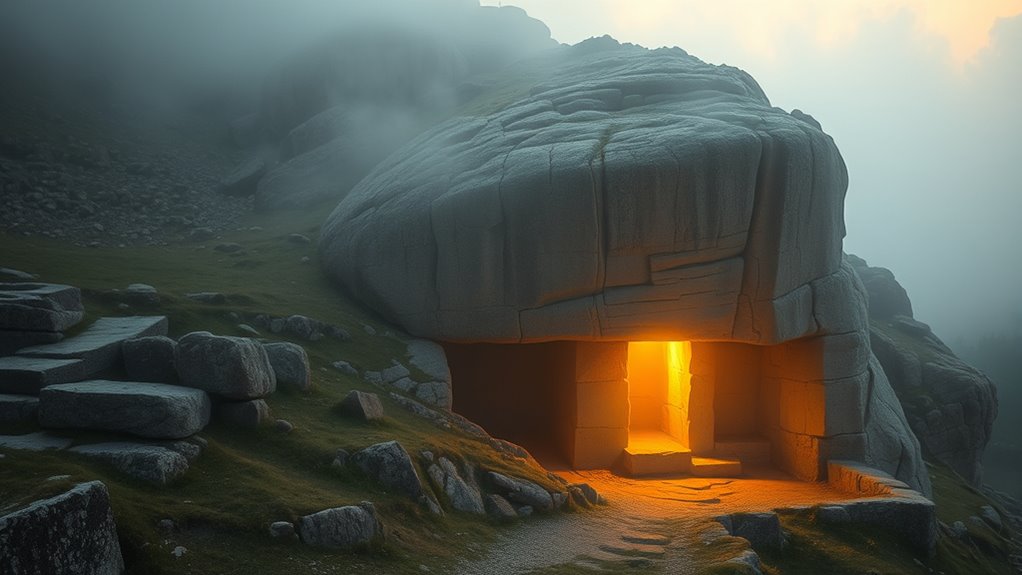
You might wonder how faith and historical evidence shape the story of the resurrection. Some see it as a literal event rooted in history, while others view it as powerful symbolism. Exploring these perspectives reveals how theological significance can differ from what history can confirm.
Faith and Historical Evidence
The resurrection holds profound theological significance for believers, symbolizing hope, renewal, and the divine promise of eternal life. Yet, when it comes to faith and historical evidence, questions arise. You might consider these key points:
- Miracle debates challenge whether extraordinary events like the resurrection can be verified historically or are solely matters of faith.
- Faith verification often relies on personal conviction rather than empirical proof, making the resurrection a unique intersection of belief and evidence.
- Historical records offer limited direct evidence, prompting you to weigh the credibility of testimonies against the need for concrete facts.
Ultimately, the debate hinges on whether you prioritize divine intervention as a miracle or seek tangible proof, shaping how you interpret the resurrection’s significance.
Symbolism and Literal Truth
The resurrection’s significance extends beyond factual recounting and taps into deep symbolic meanings that resonate across faith and tradition. For many, it’s about symbolic interpretation—seeing the event as a powerful metaphor for renewal, hope, and divine power. Others hold a literal belief, viewing it as a historical fact essential to their faith. These perspectives emphasize different aspects of truth: one spiritual, the other factual. To clarify, consider this table:
| Perspective | Focus | Impact |
|---|---|---|
| Symbolic Interpretation | Spiritual meaning and symbolism | Inspires faith and moral lessons |
| Literal Belief | Historical fact | Reinforces doctrinal truth |
| Both Perspectives | Complementary understanding | Deepens personal and communal faith |
Contemporary Perspectives and Debates

Debates about resurrection continue to ignite interest among scholars, theologians, and skeptics alike. You may wonder how modern perspectives shape this age-old question. Consider these key points:
- Many argue that miraculous claims require supernatural interpretations, making them difficult to verify scientifically.
- Critics challenge the historicity, viewing resurrection stories as legends developed over time.
- Advocates point to archaeological and textual evidence supporting the event’s reality.
Contemporary debates often hinge on the tension between faith and empirical evidence. Some see the resurrection as a literal miracle, while others interpret it as symbolic or mythic. These differing views keep the discussion alive, fueling ongoing research and dialogue about whether it was a supernatural event or a legendary story.
Frequently Asked Questions
How Do Different Religious Traditions Interpret the Resurrection Story?
You explore how various religious traditions interpret the resurrection story through their unique theological perspectives. Christianity views it as a literal event confirming Jesus’ divine nature, while some denominations interpret it symbolically. Jewish and Islamic perspectives may see it as a spiritual or metaphorical story, highlighting doctrinal differences. You understand that these interpretations shape beliefs and practices, reflecting each tradition’s core doctrines and theological outlooks.
What Cultural Influences Shaped Early Christian Beliefs About the Resurrection?
Imagine a tapestry woven with threads of mythical origins and cultural symbolism; that’s how early Christian beliefs about the resurrection took shape. You see, Greco-Roman ideas, Jewish traditions, and local legends all influenced these stories. These cultural influences made the resurrection resonate deeply, transforming it from a simple event into a powerful symbol of hope and divine promise, shaping faith across generations and cultures alike.
Are There Modern Scientific Explanations for the Resurrection Accounts?
You might wonder if modern science offers explanations for miraculous phenomena like the resurrection. Some suggest quantum theories could hint at extraordinary events, but there’s no concrete evidence linking these theories to such biblical accounts. While science explains natural phenomena, it doesn’t currently support the supernatural aspects of resurrection stories. So, you’re left exploring faith and interpretation rather than scientific proof when considering these miraculous events.
How Has the Resurrection Narrative Impacted Art and Literature Throughout History?
You see, the resurrection narrative has profoundly influenced art and literature, inspiring symbolic imagery and rich literary symbolism. Throughout history, artists and writers have depicted the event to evoke themes of hope, renewal, and divine power. You might notice how these works use vivid visuals and allegories to deepen spiritual meaning, connecting viewers and readers to the profound mystery of resurrection, shaping cultural narratives and inspiring countless interpretations across centuries.
What Are the Main Counterarguments From Skeptics Regarding the Resurrection?
You might encounter skepticism about the resurrection, with critics citing historical skepticism and proposing alternative explanations like hallucinations, legends, or myth. They argue that the accounts lack contemporary corroboration and question the reliability of the gospel narratives. Skeptics suggest that the story could have developed over time or been influenced by cultural myths, making the resurrection more a legend than a verified historical event.
Conclusion
Ultimately, whether the resurrection is legend or fact, it’s the most profound event in history—shaping beliefs, inspiring miracles, and challenging your understanding of reality itself. It’s a truth that could move mountains or vanish like a whisper in the wind. But what you choose to believe holds the power to transform your life forever. So, ask yourself: are you ready to accept the impossible as the ultimate truth?

